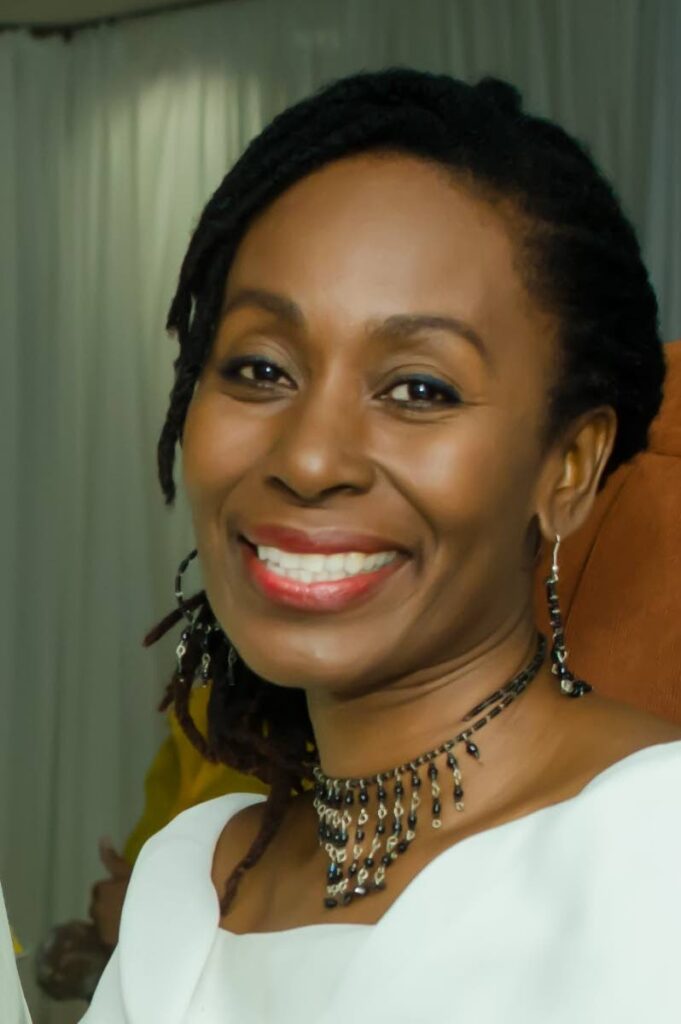Spirit memories

Culture Matters
DARA E HEALY
Everybody gone nice and groovy.
Bunji allyuh pushing power still?
If is me alone,
Leave me with power on ah hill.
I ain't come here for no stand up,
I come to party with meh hand up!
So all soca people put yuh two hand
in the air.
Yuh two hand in the air
Yuh two hand in the air
– Bunji Garlin and Fay Ann Lyons, Hard Fete
POWDER everywhere. In between the brass band, rhythm section and pumping DJ music, revellers in the All Stars Carnival band knew – this was the song they needed to properly cross the Savannah stage.
On paper, the words of Hard Fete seem normal. After all, SuperBlue instructed us to Get Something and Wave since the early 1990s. But in the fetes and on the road, Hard Fete conjured memories from those massive, public parties of the 1990s and early 2000s; legendary names like Boy Scouts, Flour Mills, Licensing and WASA.
And like Hard Fete, Get Something and Wave seemed to be a simple song. That was until we heard SuperBlue chant, “Woi yoi, woi yoi, woi yoi yoi, woi yoi yoi, aye aye, get something and wave,” combined with the intoxicating music and the insistence of his voice.
Carnival memories are made of these moments, whether it is the power of Bunji on a 2023 Carnival stage, or a massive fete from 30 years ago with people waving huge flags, moving to the music as if it was their last wine.
This year, I felt I needed to deepen my connection to Carnival, to the experience of it. Like being surrounded by musicians playing live trumpets and saxophones, literally dancing in the middle of a brass band. Or hearing people call for Osun as I enter the stage of Eintou Springer’s Kambule (Canboulay) and thinking, “Yes, they get it.”
They understand a little better why the
egungun or ancestral masquerade passes through when we do our ritual for Ogun before going into battle. Why the moko jumbies are there. Not as traditional Carnival characters, as we are erroneously taught, but as ancestral spirits crossing over from Africa with powerful magic to help us cope, help us remember.
Slowly, we are understanding that after emancipation was declared in 1838, free Africans came to the Caribbean as indentured workers with their languages, cultural practices and belief systems.
So, it makes sense that in those Port of Spain barrack yards, amidst the poor living conditions and struggle to maintain a family life, there would have been the African influence in creating the traditional Carnival characters and the emergence of indigenous cultural forms like calypso.
t also makes sense that in 1881, resistance to the colonial government would have involved some form of African spirituality.
Jeff Henry points out that traditional characters “such as the dragon band represent a protest against the religious forms brutally imposed on Africans as a replacement for their spiritual beliefs that were declared pagan…The midnight robber was an attempt to copy and proclaim spiritual powers from birth.”
As we grapple with the origins of our Carnival, it is important to consider where we would like it to go next. For instance, we should not just accept the negative impact on small business people in our city of changing rules and routes. Carnival must be inclusive and not exclude the people from the very communities who fought to ensure our festival was not banned.
Organisation is essential. It took us four hours from Charlotte Street to the edge of the Savannah stage. Bands should not be able to skip their place in the line. It seems there must be a schedule of what time bands can cross the stage and a specific amount of time to do so. There should also be consequences for bands that refuse to be considerate of others, as happens now with Panorama.
Additionally, we must do more to develop the local market for our traditional Carnival skills, instead of harming the industry with excessive importation of materials.
Of course, change is inevitable. Yet, we cover ourselves in the mud and the paint and that is the connection, from the jamette Carnival of the 1890s, to Pinetoppers in the 1970s, to Minshall, Hard Fete, pan and stickfight. Across the centuries, through the ritual of the Carnival, we are connected. Put your hands in the air and affirm it, the spirit of we mas.
Dara E Healy is a performance artist and founder of the Indigenous Creative Arts Network – ICAN


Comments
"Spirit memories"